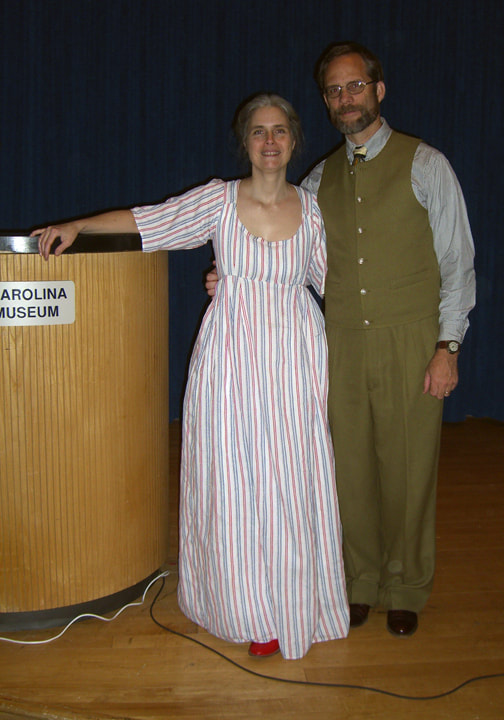102.8-12, Work Dress, c. 1795
I first saw this dress in an exhibition of garments in the collection of South Carolina State Museum. It caught my eye because of her pizzazz on the dress form and because it was large sized. The size 26 in the series is the original size! It also caught my eye because it is NOT a fancy dress. The multiple mending on the shoulders and the big sleeves make a great dress to work in or camp in for re-enactors.
Very little information about this gown was given to the museum at the time of its donation. It is known that the linen fabric was woven at a plantation in Edgefield County, South Carolina in 1781, but it was not made up into a gown until the mid 1790s.
This gown is of a transitional style with a raised waistline and two back draw string closures. Many details of its construction are from earlier 18th century techniques, such as the side seam shifted to the back in the style known as “en fourreau” and the separate shoulder straps. While the main body of the gown shows signs of alterations, they seem to be contemporary changes. In addition there are patches on the shoulders, two sets, in fact: an under patch which was sewn together as one with the main shoulder strap and an applied top patch. Also there are areas of darning on the back shoulders, indicating the gown was well used.
This gown is designed to be worn over a shift, period stays, and petticoats. The drawstring back bodice allows the wear to adjust the fit in the back of the garment.
This sewing pattern was drafted from this original gown in the collection of the South Carolina State Museum in Columbia, South Carolina. Included in the instructions is an analysis of the weave structure of the fabric.




